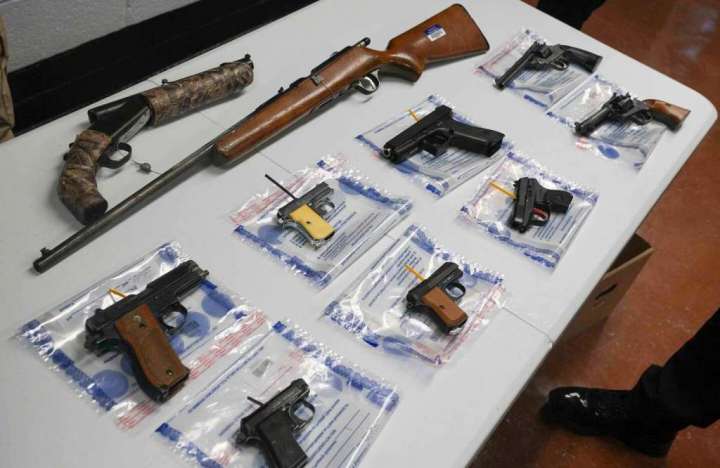Michael Waldman, president of the Brennan Center for Justice at New York University School of Law, is the author of “The Second Amendment.”
The most dangerous gun ruling in history, at the worst possible time

Part of that has to do with the century-old law that was struck down in New York State Rifle & Pistol Assoc. v. Bruen, which required those seeking “concealed carry” handgun licenses to show “proper cause” for such approval. But the even more dangerous part of the decision comes from the court’s reasoning, which dramatically changes how judges decide what is constitutional when it comes to gun safety.
Back in 2008, in District of Columbia v. Heller, the court for the first time recognized an individual’s right to own a gun for self-defense. The central right, Justice Antonin Scalia wrote then, was to protect “hearth and home.” The court never said how that newly discovered right applied to carrying a weapon outside the home — or what test should be applied.
In striking down the New York law, Justice Clarence Thomas’s six-justice majority purported to rely on history, albeit a very selective reading of history. The opinion rather frenetically plucks examples out of the often contradictory morass of history to make its point, all while claiming to be simply relying on the original public meaning of the amendment.
At the same time, the court offers surprisingly little guidance about what kinds of limits on carrying weapons New York can enact. It concedes that restrictions may be allowed in “sensitive places.” Based on the questions asked during the oral argument, it seemed the justices would specify what those places might be, with guns still prohibited in subways, schools, churches, perhaps Times Square, but there was no such guidance. The state legislature will try to pass such rules, courts will rule — and the issue will no doubt be back before the Supreme Court soon enough.
In 1791, when the Second Amendment was ratified, New York City had 33,000 residents. Today it has more than 8 million. To me, as a resident of New York City, the notion that thousands or hundreds of thousands of people might be walking around armed, thinking themselves a “good guy with a gun,” is, frankly, terrifying. Yet Thomas made clear that Manhattan, despite its density, is not a sensitive place. Exempting “cities from the Second Amendment … would eviscerate the general right to publicly carry arms for self-defense,” he wrote.
But the implications of the decision are far broader than the New York law. They stretch across the whole country. The bigger impact will probably be felt in hundreds of other gun laws in all 50 states.
Since Heller and a companion case in 2010, the Supreme Court turned away chances to rule on this question, while hundreds of lower courts developed an approach. Yes, they ruled, there is an individual right — but society has rights, too. Borrowing from First Amendment law, they first asked whether a Second Amendment right was involved, and then applied “intermediate scrutiny”: Gun rights can be limited by concerns over public safety. This consensus view was propounded by Republican-appointed judges and Democratic-appointed judges, and adopted by every federal appeals court that considered the issue.
The ruling Thursday says that all these judges got it wrong. Instead, the majority said, courts must assess gun rules especially focusing solely on “history and tradition.” Don’t look at public safety; search for analogies to past laws from a very different time.
That means the National Rifle Association and other gun-rights lawyers get a do-over. They will go to court to challenge dozens of laws that have been upheld in recent years, to say, no, you must apply “history and tradition.” The NRA is a husk of its former self, but its views live on in the lifetime-appointed justices who have now ruled.
Not only courts but also state and local governments will have to parse this fuzzy standard, at a moment when gun violence is rising, and fears of gun crime have shaken families everywhere. It will make it harder for government at all levels to restrict gun violence, and surely harder for officials to know what they can lawfully do.
The United States has nearly 400 million guns — more than we have people. Ours is the only country in the world with so many guns. And gun violence is higher here, too. The implications of this decision will play out in courtrooms and legislatures across the country in months and years to come. Where they will really play out, though, is on the streets, where there will be more guns, more armed confrontations and more crime.






